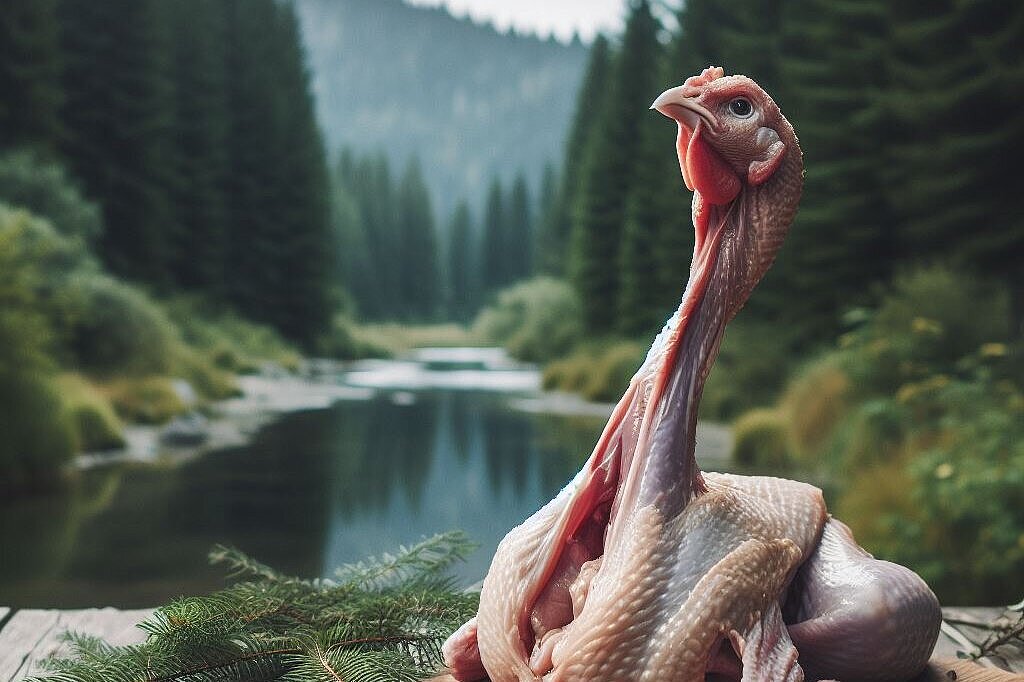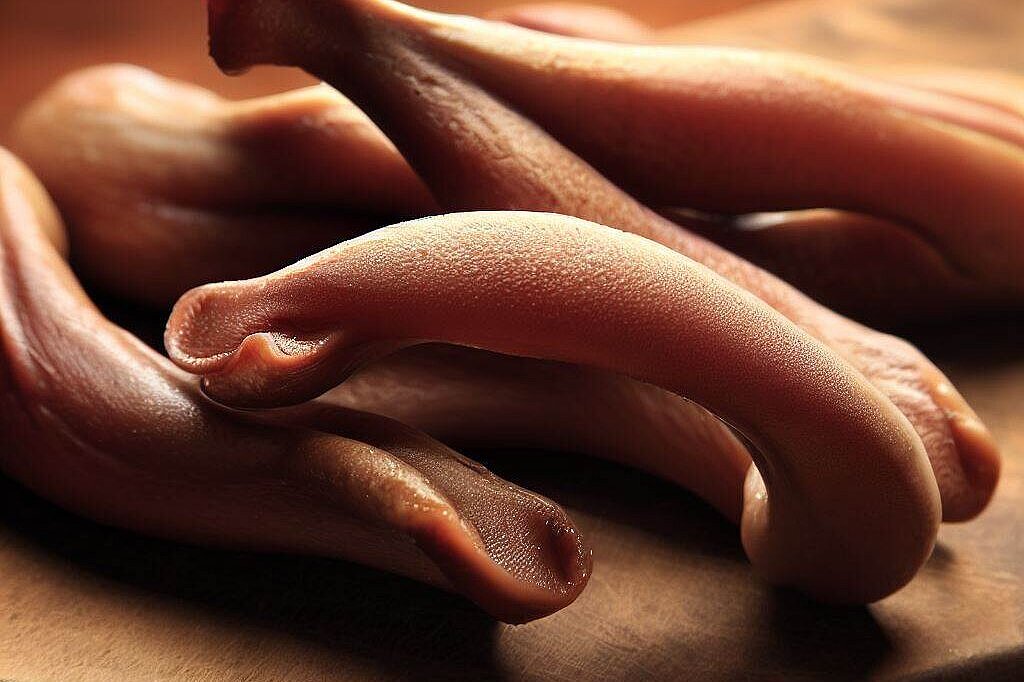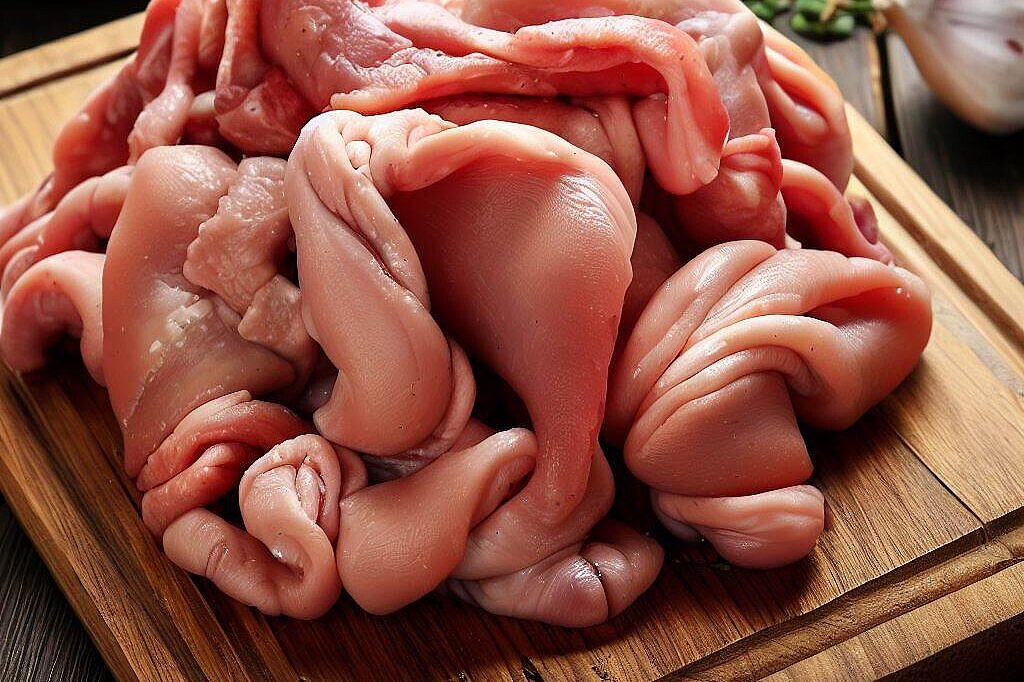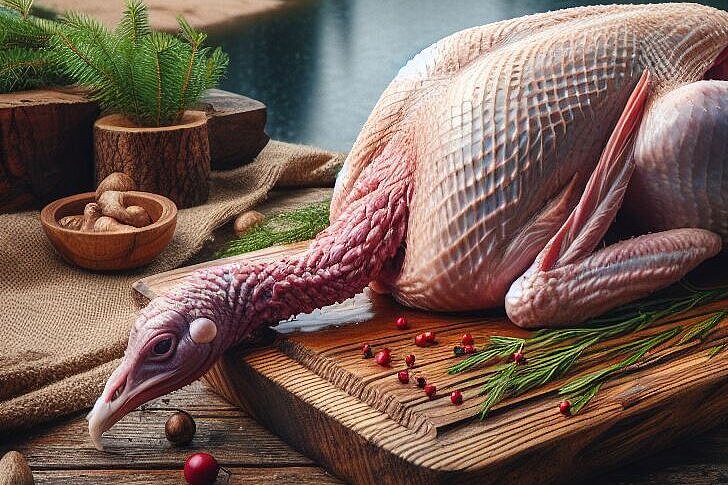Goose necks

What are goose necks?
Goose necks are, as the name suggests, the necks of geese. They consist of muscle meat, cartilage, skin and bones. Goose necks are usually cut into pieces and offered frozen. They can be ordered in special BARF stores or online. Goose necks are so-called meat bones, i.e. they contain both meat and bones. They are therefore very suitable as the main ingredient in a BARF meal.
What are the benefits of goose necks for dogs?
Goose necks have many advantages for dogs. Firstly, they are very tasty and are eaten with pleasure by most dogs. Secondly, they provide important nutrients for the dog. Goose necks contain a lot of protein, which is important for muscle building and cell regeneration. They also contain calcium and phosphorus, which ensure strong bones and teeth. Nibbling on goose necks also promotes your dog's chewing muscles and teeth cleaning. This can prevent tartar and inflammation of the gums. Goose necks can also help your dog's digestion as they contain fiber and enzymes.
What are the disadvantages of goose necks for dogs?
Goose necks also have some disadvantages for dogs that you should be aware of. For one thing, they are very high in fat and can therefore lead to obesity or diarrhea if you feed them too often or too much. Secondly, they can contain splinters that can harm your dog. Splinters can lead to injuries in the mouth or digestive tract or even cause an intestinal blockage. Therefore, you should always make sure that your dog chews the goose necks well and does not swallow them. You should also always buy fresh, high-quality goose necks and allow them to thaw before feeding them.
How do you feed goose necks properly?
If you want to feed your dog goose necks, you should follow a few rules. Firstly, you should adjust the amount to your dog's weight, size and activity level. As a rule of thumb, a meaty bone should cover around 20 to 30 percent of your dog's daily energy requirements. This means that a dog weighing 20 kilograms should get around 200 to 300 grams of goose necks per day. Secondly, you should always feed goose necks as part of a balanced BARF diet. This means that in addition to the meaty bones, you should also feed other components such as offal, vegetables, fruit or oils. This ensures that your dog gets all the important vitamins, minerals and trace elements.
What are the disadvantages of goose necks for dogs?
Goose necks also have some disadvantages for dogs that you should be aware of. Firstly, they are very high in fat and can therefore lead to obesity or diarrhea if you feed them too often or too much. Secondly, they can contain splinters that can harm your dog. Splinters can lead to injuries in the mouth or digestive tract or even cause an intestinal blockage. You should therefore always make sure that your dog chews the goose necks well and does not swallow them. You should also always buy fresh, high-quality goose necks and allow them to thaw before feeding.
How do I feed goose necks correctly?
If you want to give your dog goose necks, you should follow a few rules. Firstly, you should adjust the amount to your dog's weight, size and activity level. As a rule of thumb, a meaty bone should cover around 20 to 30 percent of your dog's daily energy requirements. This means that a dog weighing 20 kilograms should get around 200 to 300 grams of goose neck per day. Secondly, you should always feed goose necks as part of a balanced BARF diet. This means that in addition to the meaty bones, you should also feed other components such as offal, vegetables, fruit or oils. This way, your dog gets all the important vitamins, minerals and trace elements.
Goose necks are the necks of geese and are often sold in pieces and frozen. They are tasty and provide important nutrients such as protein, calcium and phosphorus for dogs. Chewing on goose necks promotes chewing muscles and tooth cleaning. However, goose necks can have some disadvantages due to their high fat content and the possibility of splinters. The amount should be adjusted to the dog's weight and needs, and they should be fed as part of a balanced diet. Safety precautions should be taken to prevent ingestion or injury and high quality goose necks should be preferred.
If you notice any signs of hypersensitivity or poisoning in your dog, you should see your vet immediately. We are not a substitute for a vet, but we try to be as accurate as possible. Every dog reacts differently and we recommend you get a second opinion or consult your vet if in doubt.
Stay healthy and take good care of your four-legged friend!😊
Similar to Goose necks
Chicken necks are a part of the poultry skeleton consisting of cartilage and meat. They are relatively soft and easy to chew, making them an ideal chew for dogs. Chicken necks are high in protein,...
Duck necks are poultry parts consisting of the neck and head of the duck. They are usually offered dried or frozen and can be fed whole or cut into pieces. Duck necks contain a lot of meat,...
Poultry necks are the necks of chickens, turkeys or ducks that are produced as offal. They consist of meat, cartilage, skin and bones and contain many nutrients such as protein, fat, calcium,...
Turkey necks are the necks of turkeys that are a by-product of slaughtering. They consist of cartilage, meat and skin and contain many nutrients such as protein, calcium, phosphorus and glucosamine....



